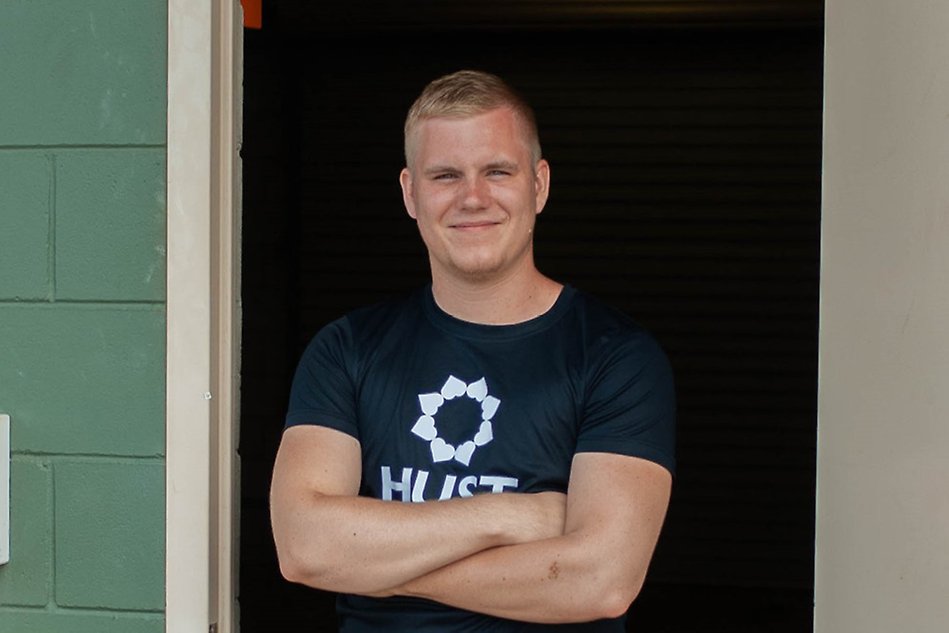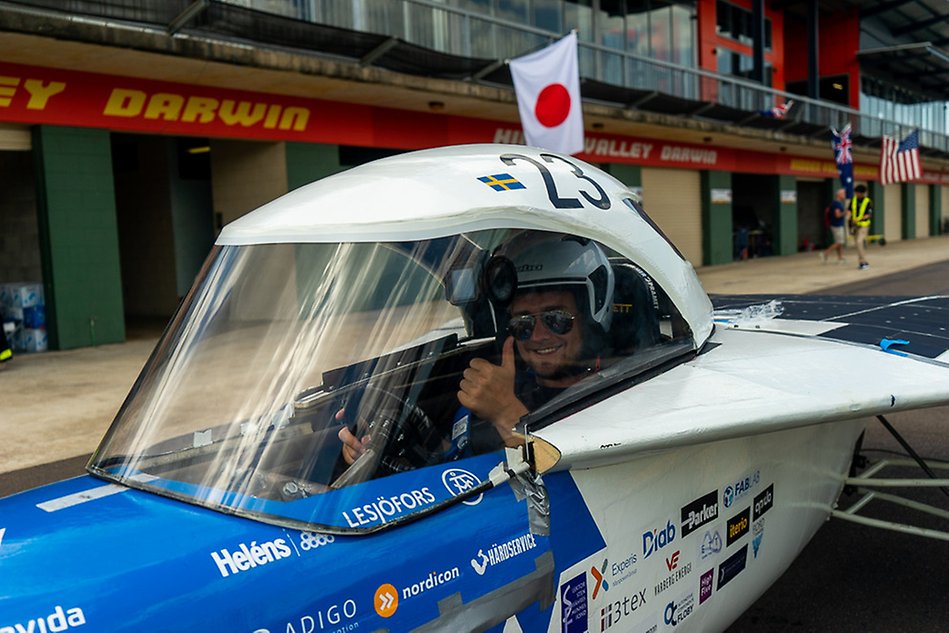Seven questions for alumnus Simon Sandahl
Simon Sandahl, alumnus of both the Programme in Innovation Engineering and the Master’s Programme in Industrial Management and Innovation, made the most of his time at Halmstad University. The studies have led to a career as a Design Engineer, and as an alumnus, he has also received a prestigious sustainability award for the master’s thesis he did at the University.
“Some of the best memories from my time as a student are in connection with HUST, Australia and the companionship that developed during all the late evenings working in the workshop at the University.”
Simon Sandahl, alumnus
Why did you choose to study the Programme in Innovation Engineering?
“For two reasons. The first reason is that I have always wanted to be an engineer, but I did not feel that any programme suited me perfectly. I wanted to get a broader perspective with influences from both project management and business development, which you get at the Programme in Innovation Engineering. The second reason is that my father studied the same programme 20 years ago, which was probably a contributing factor to my choice of engineering focus.”
Why did you choose to study further at the Master’s Programme in Industrial Management and Innovation?
“I wanted to study further after my bachelor’s degree in engineering and dive deeper into leadership within organisations and innovations. It was in connection with the student project HUST, Halmstad University Solar Team, that I came in contact with Programme Directors for the Master’s Programme in Industrial Management and Innovation. They convinced me to apply for the programme, which I am very happy for today.”

Simon Sandahl believes that the unique combination of the educational programmes is an interesting portfolio on the labour market.
What was it like to study at the bachelor’s programme and the master’s programme?
“At the Programme in Innovation Engineering, there is a strong social cohesiveness with all students within the programme. Everyone helps each other to become better. We worked a lot in projects with both fictitious and live cases in product and business development. In the master’s programme, I had the advantage that many of my peers from the bachelor’s programme also chose further studies, which created a natural transition between the programmes. The biggest difference in the master’s programme was the amount of literature and research articles that I had to read every day, which required me to prepare for each lecture.”
“I am very satisfied with my choice of programmes. I strongly believe that the combination of the Programme in Innovation Engineering and the Master’s Programme in Industrial Management and Innovation provides an interesting portfolio to bring to work life. For me, all the knowledge from the courses can be applied directly in my daily work and gives me the opportunity to create a picture of complex connections and underlying factors.”
You are one of the founders of the exciting student project HUST. Tell us more!
“I started HUST from scratch together with 26 amazing students from the Programme in Innovation Engineering. The project aims to build a racing car powered entirely by solar energy, with the goal to participate in one of the world’s largest competitions for solar powered cars – the Bridgestone World Solar Challenge in Australia. In 2019, we managed to participate with our very own solar-powered electric car. I assisted, for example, with CAD construction, production of coachwork, and graphic design such as the logo. I was also a driver, as well as a team leader for an area of responsibility.”
“Slightly chaotic, you might think, but the project has been a fantastic experience and very rewarding when it comes to creating an opportunity to use and develop my theoretical knowledge from the education in a live project. Some of the best memories from my time as a student are in connection with HUST, Australia and the companionship that developed during all the late evenings working in the workshop at the University.”

The adventure in Australia offered burning batteries, bathing in an ice-cold fountain, companionship, euphoria, scorching sun and a triumphant finish.
You won a sustainability prize for your master’s thesis. Congratulations! What was your study about?
“It is a wonderful feeling to receive the prize! Especially after all the hard work on the thesis. In addition, I feel very honored to have been nominated for the award because it was my Programme Directors who chose to nominate the thesis.”
“The study explores the links between the choice of technology and carriers’ business models, to provide a greater understanding of the challenges electrification brings for carriers. The paper resulted in unique and important insights into the energy transition within the transport industry which affects many sections of society and the everyday lives of millions of consumers.”
What happened after graduation and what is your current occupation?
“After graduation, I immediately got a job as a Design Engineer at Saab Kockums in Malmö. Here, we develop the submarines and surface combatants of the future. Working in the defence industry has its peculiarities, but it is incredibly interesting to be able to contribute to something that is so important to the security of Sweden, especially in this period of unrest.”
What advice would you like to give to students at your programme?
“Take the opportunity to understand what you read – do not read just to pass the courses. Some courses will be more fun than others, that is always the case, but try to understand how what you learn can be applied in real life. Find the fun parts in each course or make it fun yourself. If you do, you will find it easier to learn and will remember it for a long time.”
Text: Katarina Tran
Foto: Privat
About the sustainability prize
The sustainability prize rewards theses in business economics with a sustainability focus. This year’s prize had an extra drive in sustainability work in times of crisis, where theses with a focus on transitioning to a fossil-free society were meritorious.
The prize includes a scholarship of SEK 25,000 and is granted by the Research Institute for Organization and Business in Sustainable Change (ROBUST) at the School of Economics at Umeå University and Umeå Energi. The aim is to encourage economics students to take an interest in, and immerse themselves in, sustainability. Entitled to apply for the thesis prize are students in business administration from Swedish universities who have written a thesis at bachelor’s, or master’s level where the main focus is sustainability.

